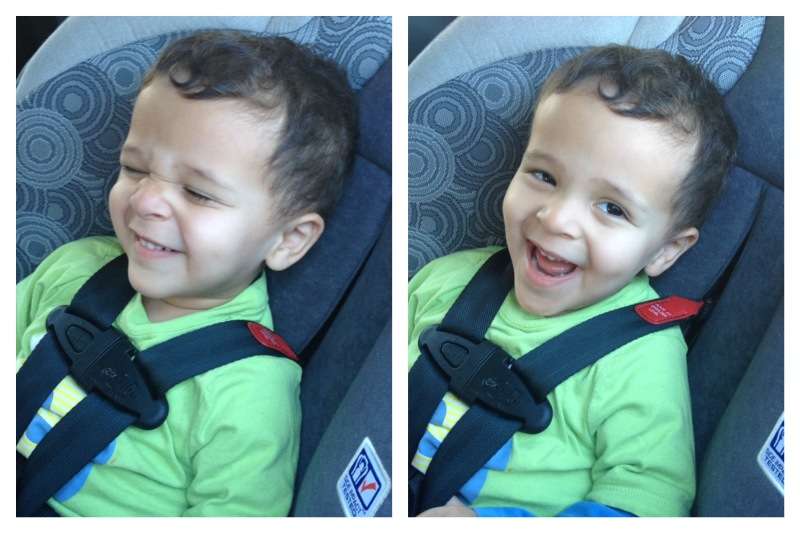Recent Articles
Popular Makes
Body Types
10 MORE Car Seat Mistakes You Didn’t Know You Were Making
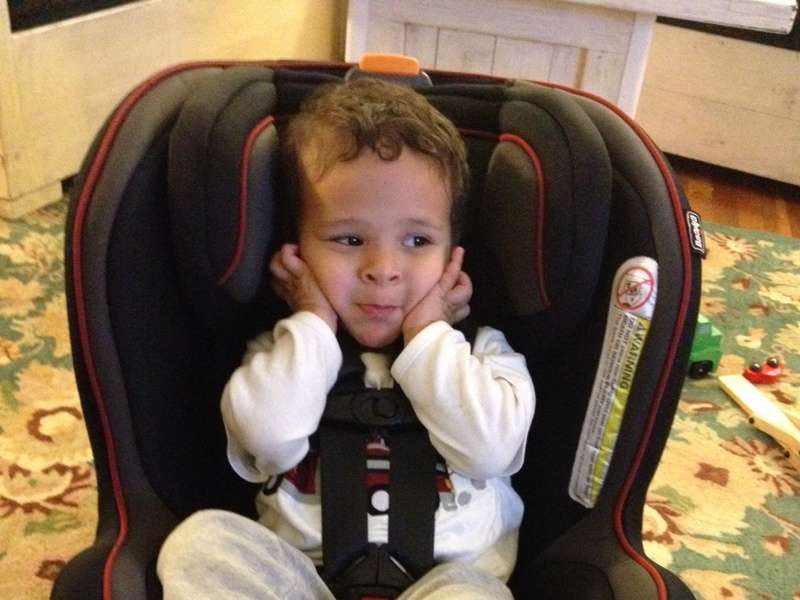
As explained in 10 Car Seat Mistakes You Didn’t Know You Were Making, nearly three out of four child restraints in the US are installed or used incorrectly. Here I will highlight 10 additional common errors that parents and caregivers make when it comes to car seat safety. Car seats can be complicated; there are so many different ones available and so many different vehicles one could put them into. But once you know better, it’s a lot less daunting to make your car seat, and your child, as safe as possible
Before reading on, keep in mind #10 from my previous article. You should always consult a Child Passenger Safety Technician, or CPST, if you have questions about your specific car seat, vehicle, or installation. They are there to help you. Find a CPST by visiting SafeKids.org.
11) Leaving the harness too loose or the straps twisted
When I brought my 4-pound preemie home from the hospital two years ago, I was terrified that those car seat straps would squish his tiny body. I tightened them what I thought was enough—and then a nurse came in and said it was way too lose, and tightened it a lot more. Surprisingly, he didn’t seem to mind. She taught me that to see if the harness is tight enough, you should try to pinch the strap horizontally at the child’s shoulders. If you have it right, you won’t be able to pinch any between your fingers. In the picture above, the way shown on the left hand side is correct. Generally, babies and children will let you know (sometimes loudly) if the harness is uncomfortably tight. And even with a 4-pound newborn, it is nearly impossible to “squish” or injure them with a too-tight harness.
While you’re tightening those straps up, remember that no harness strap or seat belt should be used with twists in it. Take the time to straighten them out before buckling them. Having twists in the straps can interfere with the harness’s operation in an accident.
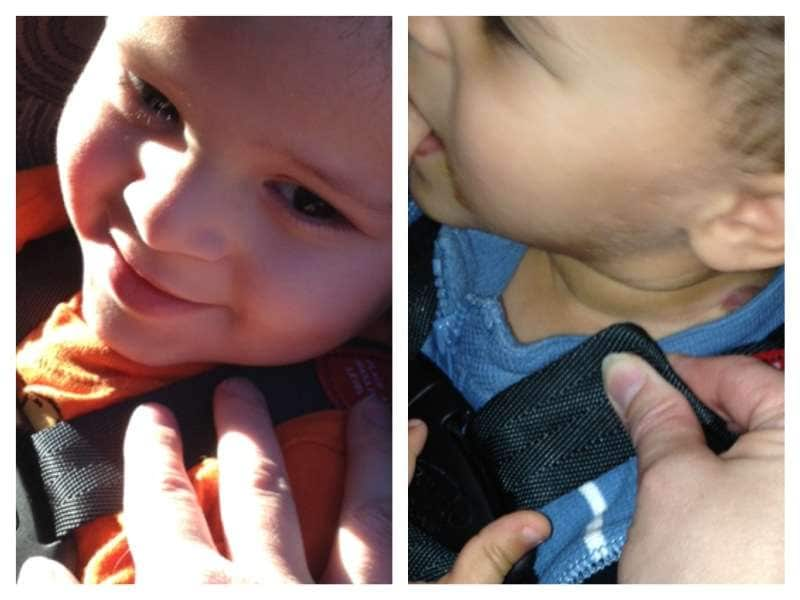
12) Buckling the child in wearing bulky winter clothing
As we head into winter, this issue deserves special attention. It is not safe for kids to wear thick coats or other bulky clothes under the harness. In an accident, the force will compress the air out of the clothing, and from a physics standpoint, the coat will almost not be there at all. The slack in the harness once the clothes compress can be so great that the child slips right out of the now-too-loose straps.
If you’re not sure whether the clothing is too bulky, try strapping your kid in with it on, tightening the harness as much as possible. Then take the kid out, take off the clothing in question, and put them back in. Buckle the harness but do not tighten it. Is it still acceptably snug? Does it pass the “pinch test” described on the previous page? Probably not. As a general rule, a single-layer fleece jacket will be thin enough, but more than that is likely too much bulk. You can see above that once the coat was removed, the harness was so loose that he could probably climb most of the way out on his own!
There are many ways to deal with this problem. You can strap them in and then put the coat on them backwards. You can put them in a poncho (my son loves his “Thomas the Train” fleece one). Or you can just keep blankets in the car—whatever works for you.
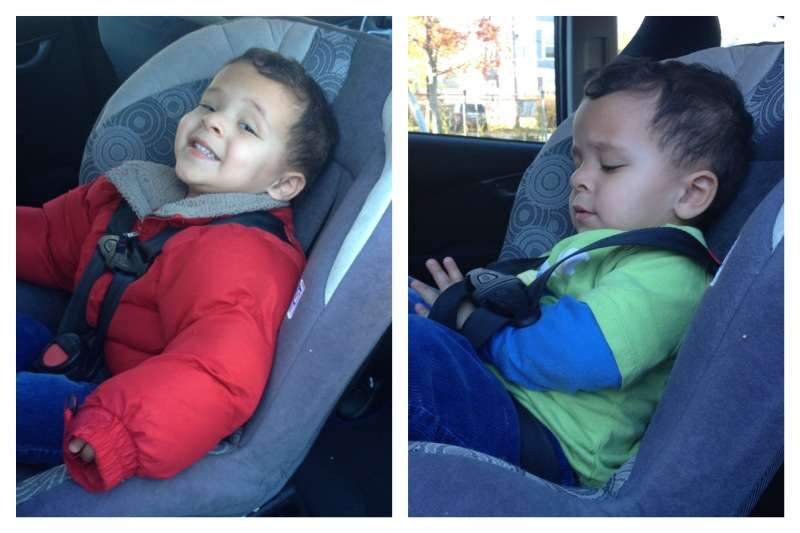
13) Positioning the chest clip incorrectly
The plastic chest clip might not seem like it does much, but it is there to keep the straps in place so that they can do their job in a crash. To be effective, it needs to be (as the name suggests) on the child’s chest, specifically around armpit leve (above right)l. It shouldn’t be on their belly (as shown above on the left). If it is there, it might not keep the straps from slipping off the child’s shoulders in an accident.
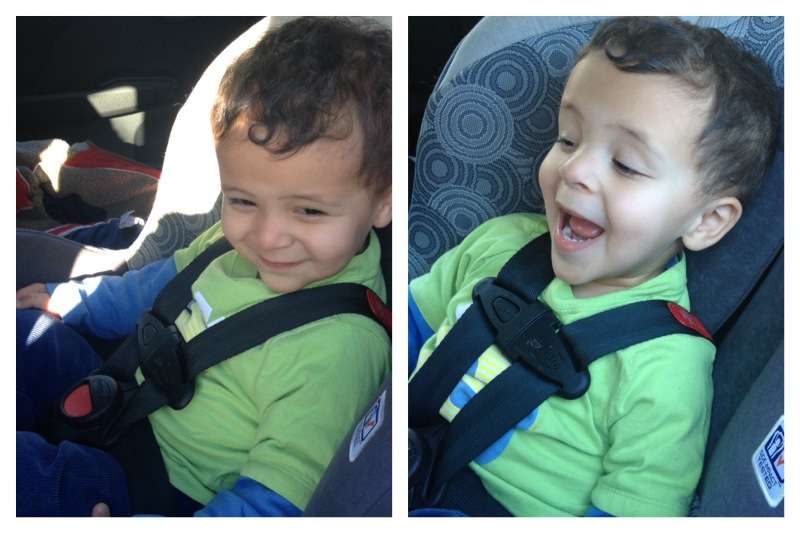
14) Allowing the rear-facing child seat to press up against the driver’s or passenger’s seat
When I first installed my son’s car seat, I thought, “Oh good, I can pull the passenger seat back so it’s pressing up against his (rear-facing) car seat. That will make it more stable if we get in a crash, to have it wedged in there like that.” This made perfect sense to me, but it was incorrect. Most seat manuals will say that the seat should not “brace” or forcefully touch the seat in front of it. While a few seats do allow this, newer vehicles often have advanced air bags or active head restraints that only function correctly if nothing other than the passenger is touching the seat. That means that there are very few vehicle/car seat combinations for which bracing the child seat against a front seat is acceptable. When in doubt, don’t do it.
Above, the picture on the left is correct.
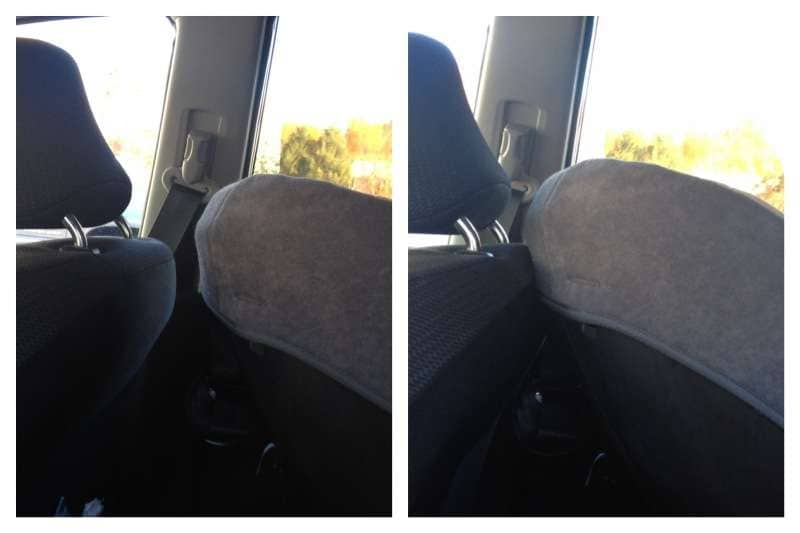
15) Installing the seat too loosely in the vehicle
Whether you install using LATCH anchors or the seat belt, the child seat needs to be tightly secured to the vehicle seat. You should be able to move it less than one inch side-to-side at the belt path.
If your seat is a convertible (can face rear or forward), you should also be sure to use the correct belt path. The paths should be labeled to indicate which one you should be using, but if it’s unclear, consult the manual. Using the wrong belt path can render the seat very unstable and cause it to fail in a crash, even if it seems like it is in there securely.
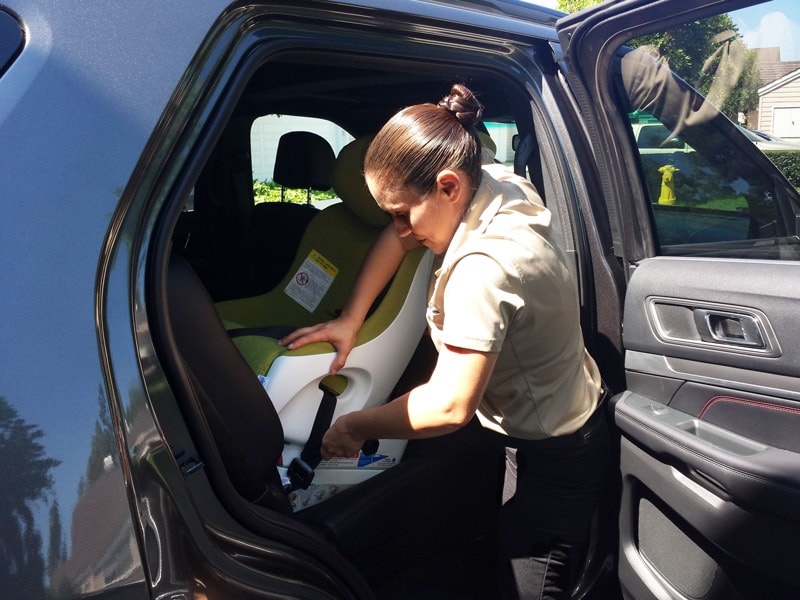
16) Buying an “all in one” seat with the belief that it really is the only seat you’ll ever need to buy
While not necessarily dangerous, this common error can be expensive and frustrating. There are several seats on the market that claim to grow with your child all the way from birth, through the booster stage, until they can use an adult seatbelt (one is the Graco SmartSeat, pictured above). While this concept is appealing, are several problems with it.
There is no seat currently available in the US that actually does all of the modes well. They tend to have low height and weight limits for rear-facing, and to be VERY large, which makes it hard to fit them rear-facing in many vehicles in the first place. They often fit newborns poorly, and/or make poor boosters, with low height limits and inadequate belt positioning on older kids. You’ll eventually need to buy another one, like it or not. If you’re looking to save money, a carefully-selected convertible seat can get most kids from birth to the booster stage; just don’t expect it to be a good fit as a booster.
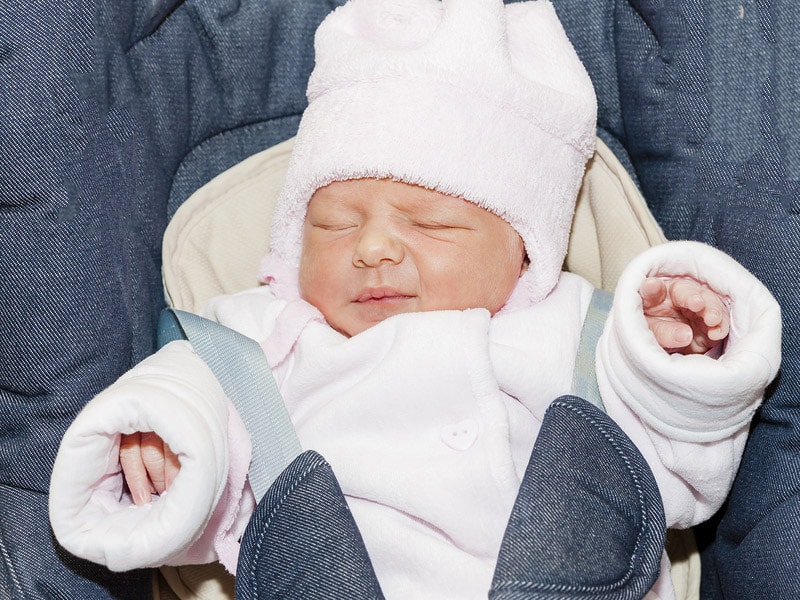
17) Driving with the infant seat handle in the wrong position
The hard thing here is that there is no one rule that applies to all infant carrier-type seats. For some, you can drive with the handle up or down. For others it has to be up, and then there are some that require it to be down. The only way to know for sure is to consult your good old friend, the car seat manual. It is important to follow whatever the manufacturer says is correct, because the seat was crash-tested—and passed—in that configuration.
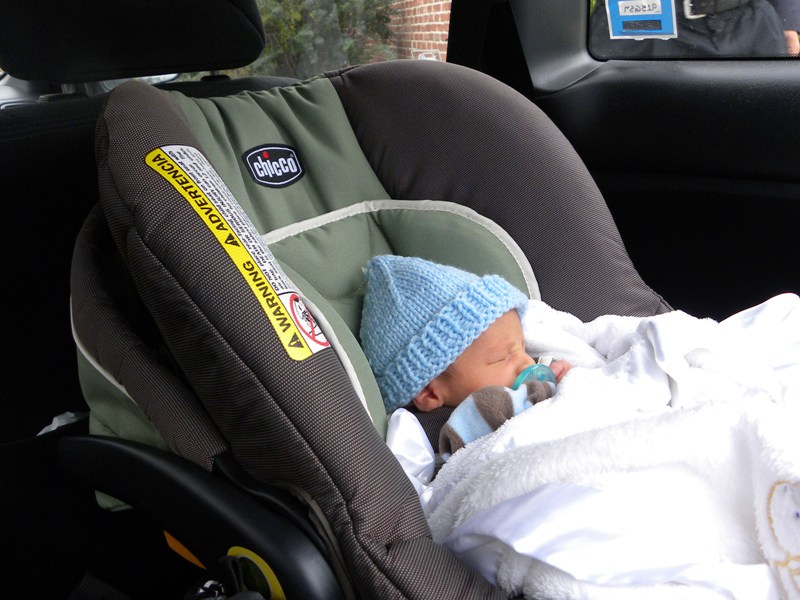
18) Washing the harness straps improperly
Kids are messy. If yours has a spill or “accident” that requires the car seat’s harness straps to be cleaned, it is very important that you NOT immerse them in or saturate them with water (this also means no machine washing, obviously) unless so directed by the manual or by the manufacturer’s representative. They can be wiped with a damp cloth—that’s about it. If they’re truly a mess, your best bet is to contact the manufacturer, who can probably send you new ones or give you instructions on the safest way to clean them thoroughly. For most seats, immersing the straps causes the material to weaken and stretch out; it may then fail in a crash.
It is usually safe to wash the fabric cover of the seat, but check the manual for instructions on washing all components of the seat. Even if it says it’s okay to put the cover in the dryer, my advice is not to. I did this once and it did not turn out well.

19) Checking the seat on a plane (including gate checking), or using a rental car seat
We all know what happens to luggage on an airline. It’s tossed around, dropped, and worse. Once you check your seat—even gate checking, even in a padded bag, even if they say they’ll be super careful—you have no idea what kind of damage it may incur. The damage might not be visible, but since you no longer know the seat’s history, it is now unsafe to transport a child in it. This is also why it is not recommended to use a rental car seat. You don’t know how it has been treated by previous users, whether it has been in an accident, thrown out a window, whatever. Even if you reserve a child seat from the rental car company, they may not have the type you need when you arrive (“Here’s an infant carrier for your three-year-old!”)—and the daily charge for the seat is enough that if you don’t bring your own with you on the plane, it is cheaper to just buy an inexpensive one at your destination.
Another reason not to check a car seat is that if it IS severely damaged, or lost, you’ll arrive at your destination and not have a seat for your child. The solution to this is to bring your child’s seat on board the plane and have them sit in it as if they were in the car. That way you know the seat—and more importantly, the child—will arrive unharmed.

20) Having the harness straps at the wrong height
For a rear-facing seat, the straps should come from at or below the child’s shoulders, even if it’s way below—don’t move the straps up to the next slot until their shoulders are even with it. For forward-facing seats (and don’t forget, kids should never be forward-facing until 2 years old at the absolute minimum), the straps should come from at or above the shoulders. If the child’s shoulders are above the highest slot in forward-facing mode, they have outgrown the seat and it is no longer safe for that child to use.
